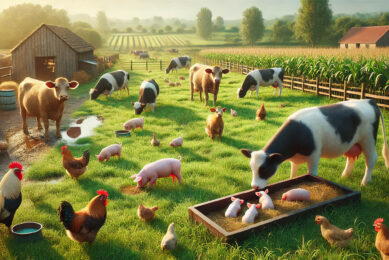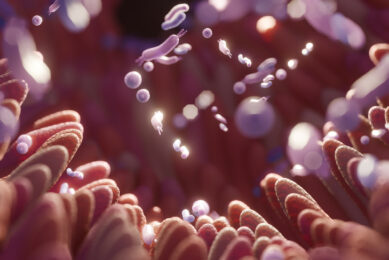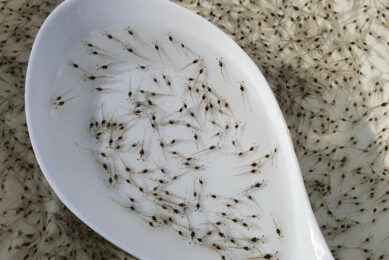How do dietary nutrients impact diarrhoea in weaners?
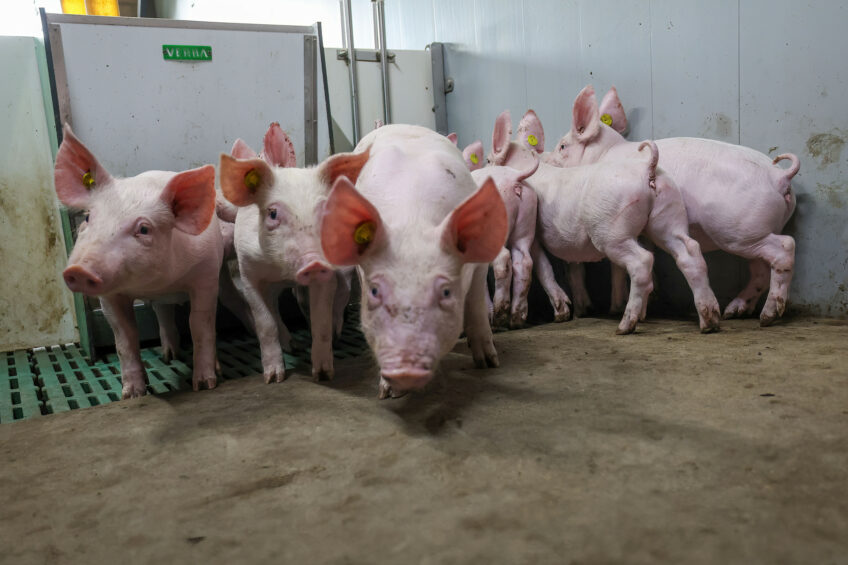
This article discusses the impact of protein, fibre and fatty acids on diarrhoea in weaners. It is essential to provide a proper level of each dietary compound to promote a healthy bacterial community and prevent post-weaning diarrhoea in piglets.
Various types of gut barriers in piglets
The piglet’s gut constantly interacts with external substances and its optimal function depends on gut barrier integrity. The gut barrier is comprised of a mucosal barrier, immune barrier, and microbial barrier which together maintain gut balance.
The gut mucosal barrier consists of a protective layer that prevents the binding of pathogenic bacteria to the gut epithelial cells, and it involves both mechanical and chemical barriers.
The gut immune barrier is made of immune cells located in the mucosa. It recognises exogenous antigens, prevents allergic reactions and secretes immunoglobulins.
The gut microbial barrier, which is comprised of microorganisms colonised on the surface of the mucosa, plays a critical role in piglet health. The gut microbial barrier promotes nutrients digestion and absorption, provides energy for the host, resists pathogens, and regulates the immune system and the normal function of the gut.
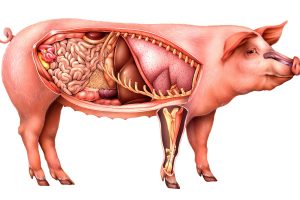
The impact of weaning stress on gut barriers
Weaning stress destroys the mucosal barrier and immune barrier function, causes the villus to deteriorate, increases crypt depth, reduces gut defences, and enhances gut permeability, inflammation and barrier dysfunction.
Increased gut permeability caused by weaning enhances the passage of gut contents, toxins and pathogens across the gut mucosal barrier and causes inflammation and infection.
Weaning also decreases mucin secretion, damages the gut chemical barrier and leads to infection. In addition, weaning stress reshapes the gut microbiota of piglets, promotes the growth and reproduction of pathogenic bacteria, and reduces gut microbial diversity, thus resulting in destruction of the microbial barrier and gut inflammation.
The impact of diet on post-weaning diarrhoea
Diet is one of the main exogenous factors affecting the incidence of post-weaning diarrhoea. During lactation, piglets maintain a low gut pH by ingesting and fermenting lactose into lactic acid. However, after weaning, solid feed consumption and reduction in lactose intake increases the gut pH, alters the gut microbiota, and leads to post-weaning diarrhoea, dehydration, and even death in piglets. In addition, diets with imbalanced amount of protein, fibre and fatty acids increase the osmotic pressure between plasma and the gut cavity and cause diarrhoea.
The role of dietary proteins
The post-weaning diet contains proteins to improve the growth performance of piglets; however, excessive protein is difficult to digest and be absorbed in the immature piglet digestive tract. Furthermore, proteins have a strong acid binding capacity; therefore, high-protein diets enhance the E. coli adherence to gut tract and lead to hypersecretory diarrhoea.
In addition, high-protein diets produce a large amount of ammonia in the colon, damage the gut epithelium and induce diarrhoea.
On the other hand, long-term feeding of low-protein diets leads to reduced growth, oedema of the gut mucosa and diarrhoea.
Therefore, the appropriate dietary level of protein for post-weaning piglets is currently considered to be about 20%. Dietary supplementation with essential amino acids such as isoleucine, valine, tryptophan, methionine, lysine and threonine reduce diarrhoea and increase growth performance.
The source of dietary protein is another important factor affecting gut health, gut microbiota composition and post-weaning diarrhoea incidence. Plant-derived proteins contain anti-nutritional factors which reduce their digestibility compared to animal-derived proteins. However, plant-derived proteins lower the abundance of Staphylococcus and E. coli in the gut and increase the stability of the microbial community to resist disease.
The role of dietary fibres
Dietary fibre is the main source of energy for gut microbial fermentation and it affects the composition and metabolic activity of the bacterial community. Dietary fibre regulates gut morphology, immune system and host gene expression, improves gut integrity, decreases toxic metabolites and reduces the incidence of post-weaning diarrhoea. It has been shown that supplementing the diet with wheat bran increases the height of gut villi, improves the integrity of the gut mucosa and prevents the spread of pathogens.
Dietary fibres are divided into soluble fibres, which are primarily found in legumes, fruits, vegetables, oats, wheat and rice, and insoluble fibres present in whole grains such as wheat bran and oat shell. Insoluble dietary fibre reduces the relative abundance of E. coli and the rate of diarrhoea. Dietary supplementation of wheat straw and oat husk stimulates amylase activity and improves gut adaptation to solid feed. In contrast, soluble dietary fibre promotes the growth of E. coli and the incidence of diarrhoea.
The role of dietary fatty acids
Dietary fatty acids regulate the gut barrier function and microbial community, reduce gut pH, improve gut health and alleviate diarrhoea in piglets.
Medium-chain fatty acids provide energy for piglets and improve gut integrity under inflammatory conditions. Furthermore, medium-chain fatty acids exhibit antibacterial activity by destroying bacteria membranes.
Adding organic acids to dietary fatty acids improves their antimicrobial effects in diarrhoea treatment and enhances the gut barrier function.
Short-chain fatty acids modulate the composition of gut microbiota, decrease crypt depth and gut permeability, increase villus height and nutrient digestibility as well as the incidence of diarrhoea.
Polyunsaturated fatty acids are inversely linked to the abundance of pathogens and positively associated with the abundance of beneficial bacteria. On the other hand, an imbalanced proportion of polyunsaturated fatty acids in piglets diet leads to the production of pro-inflammatory mediators and diarrhoea.



